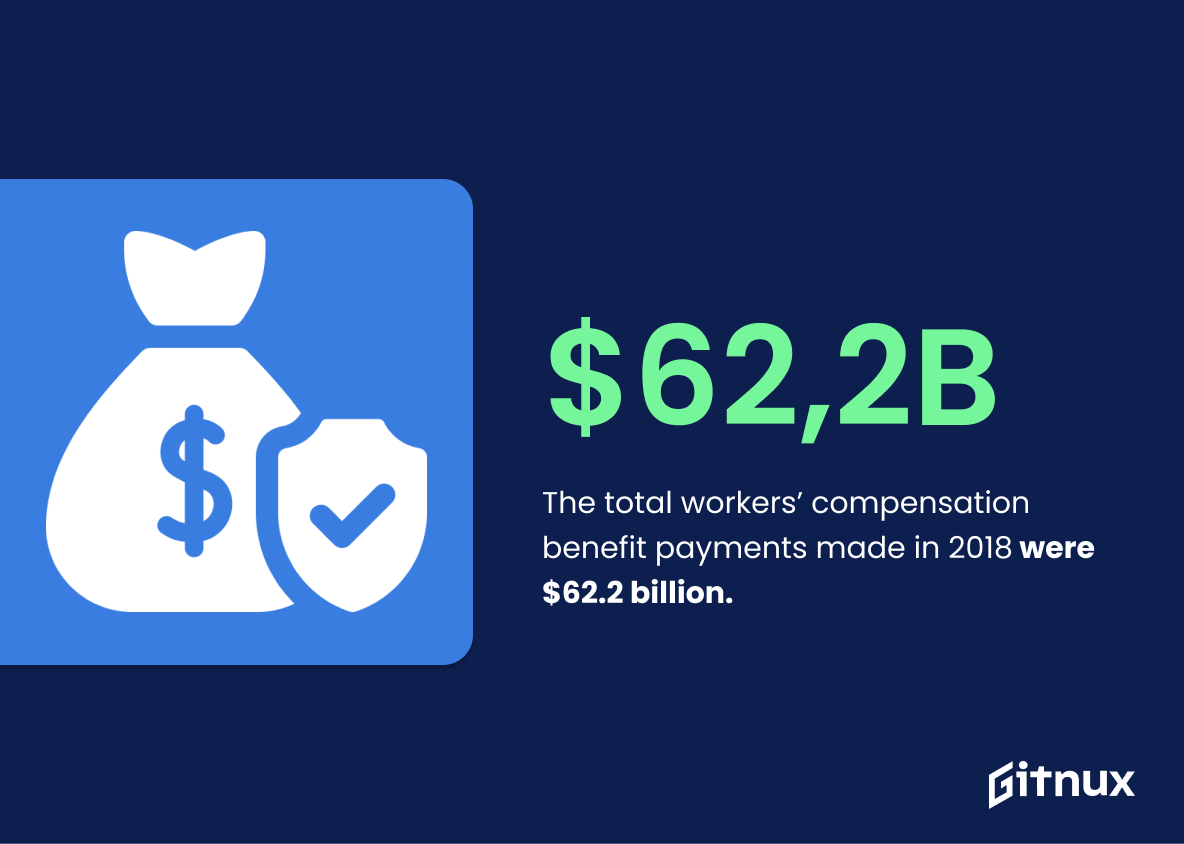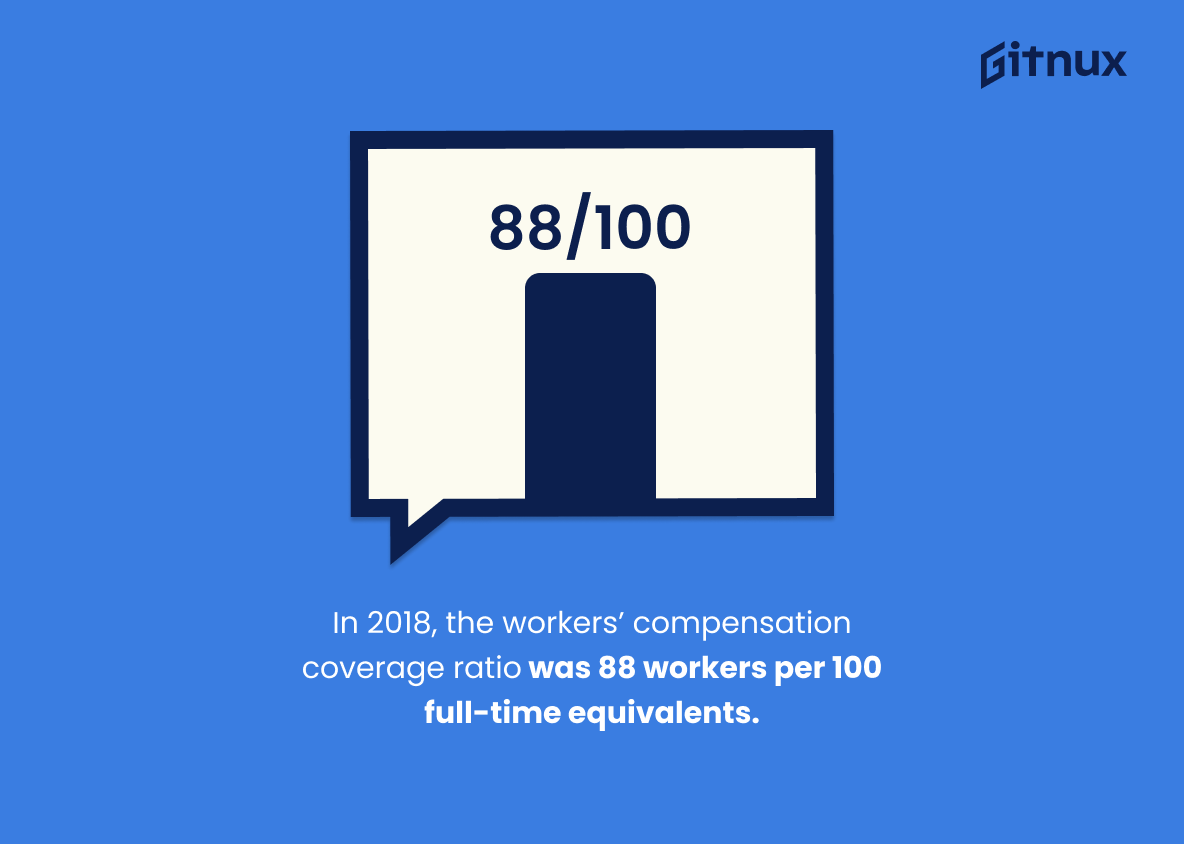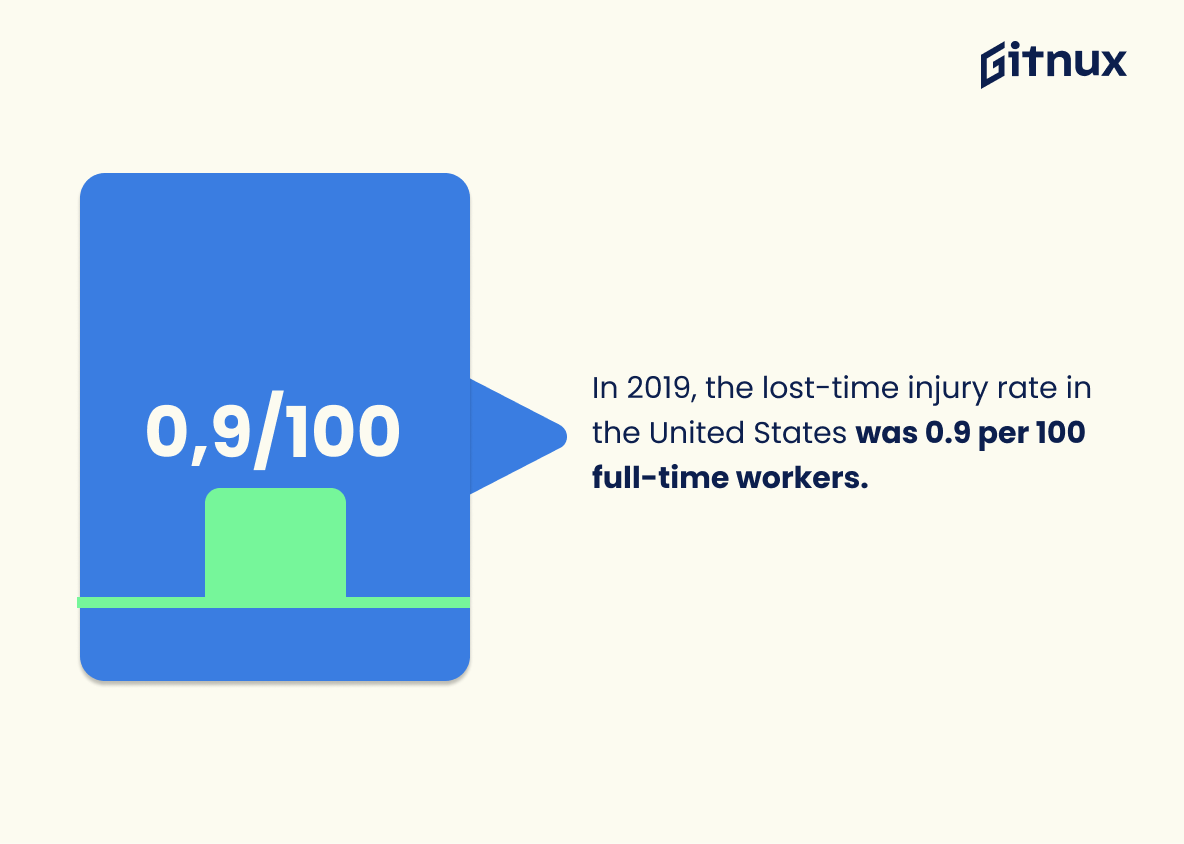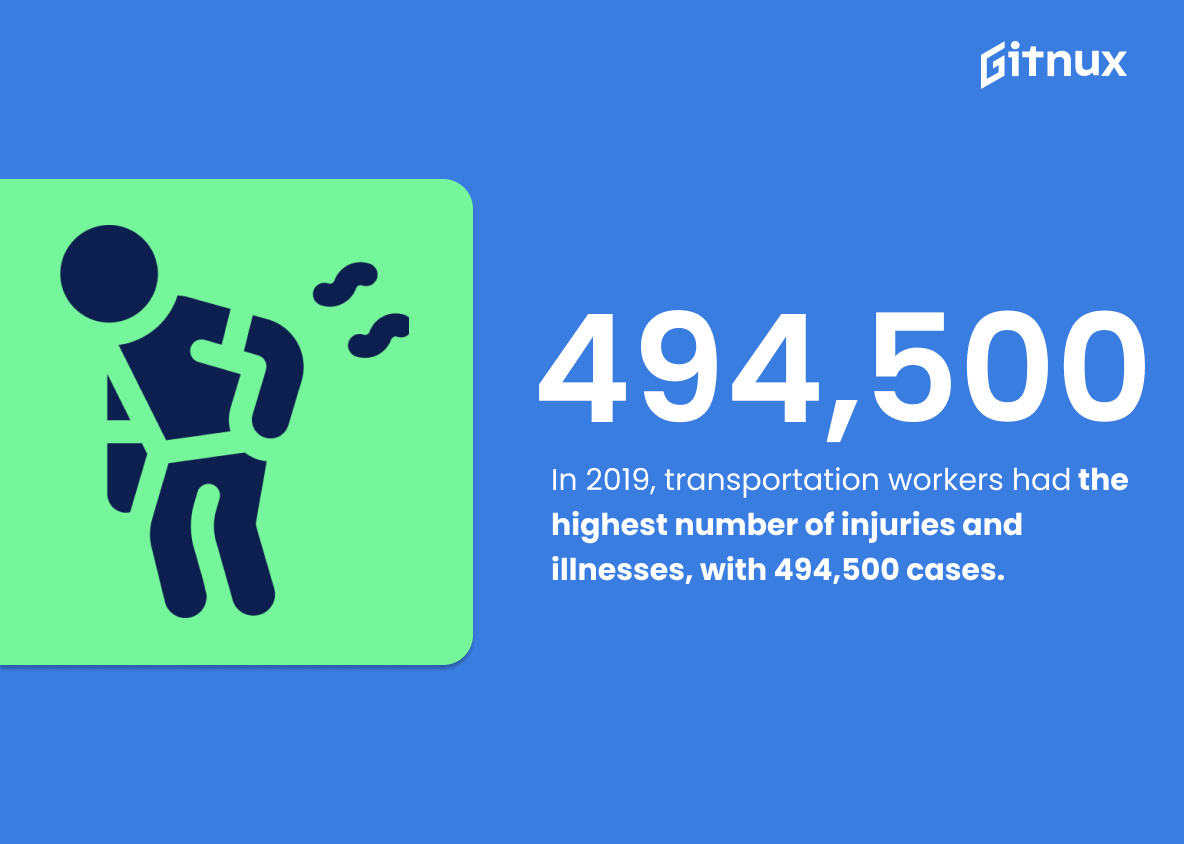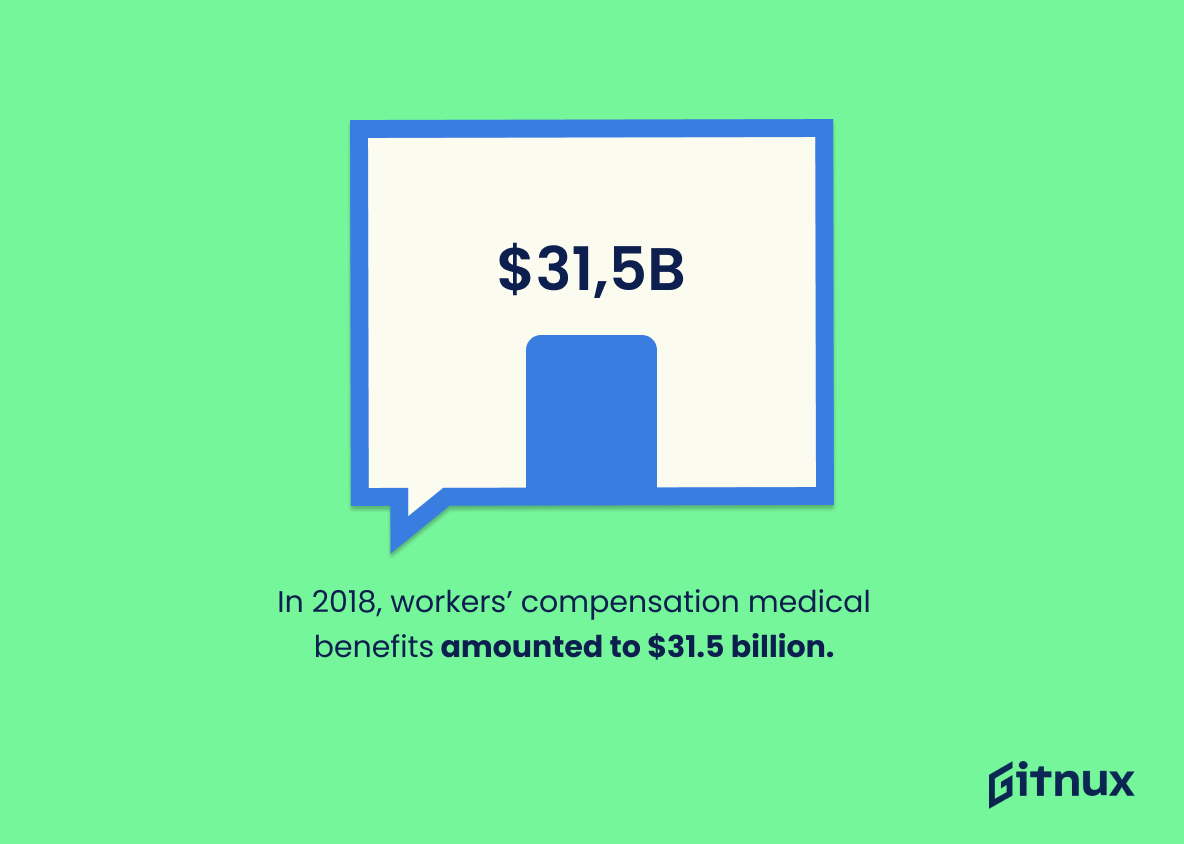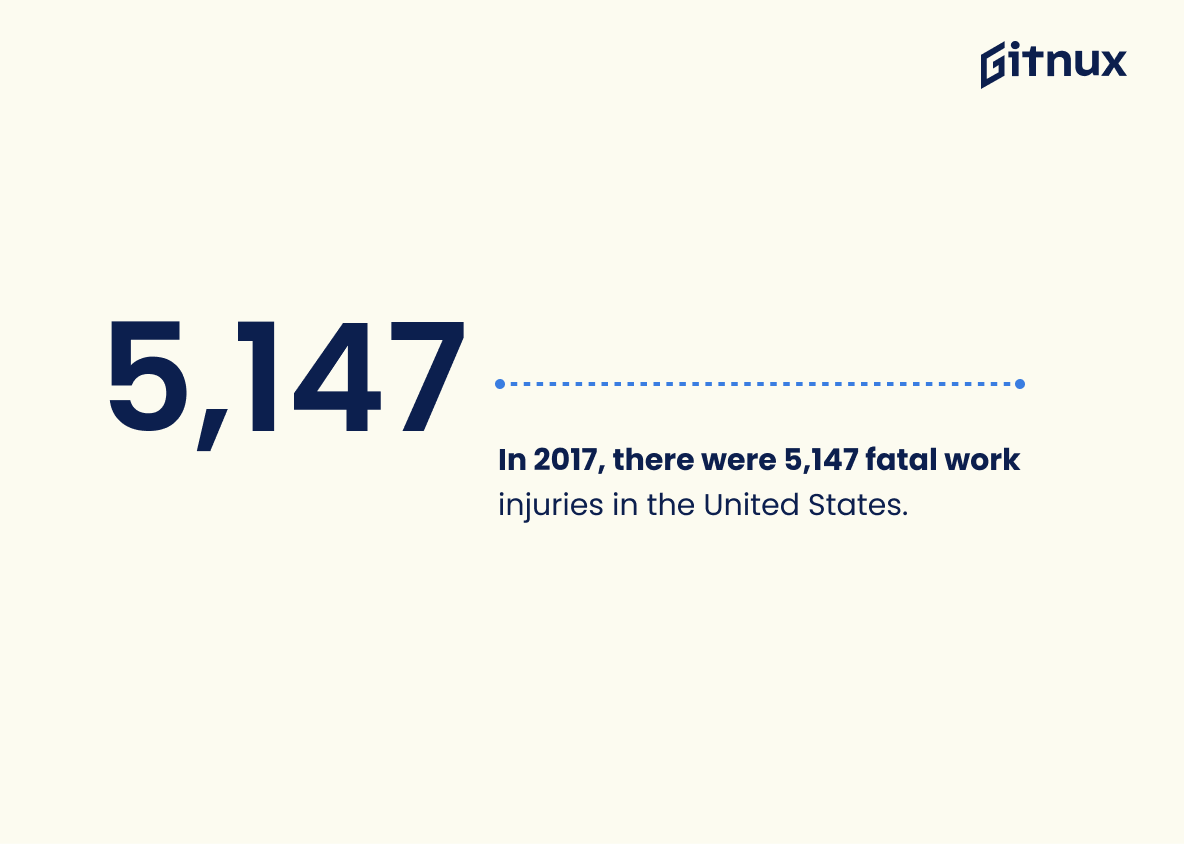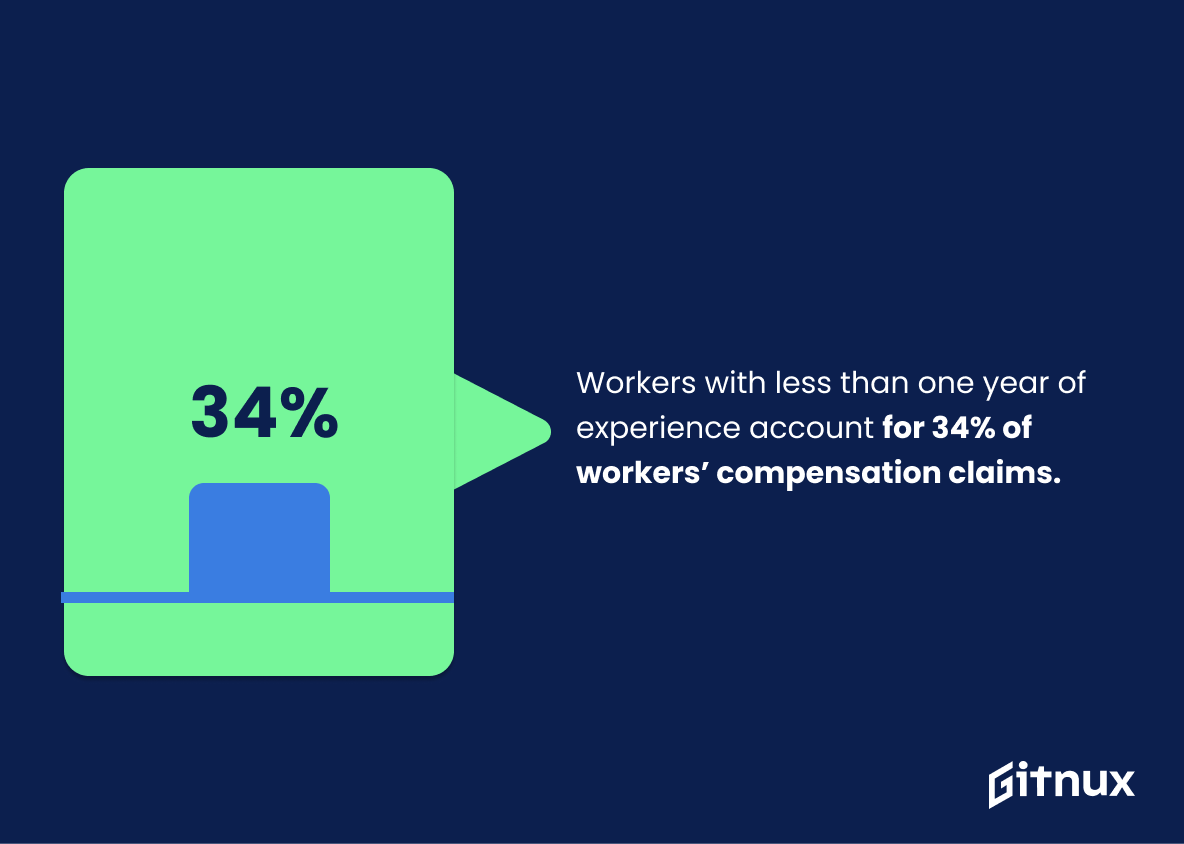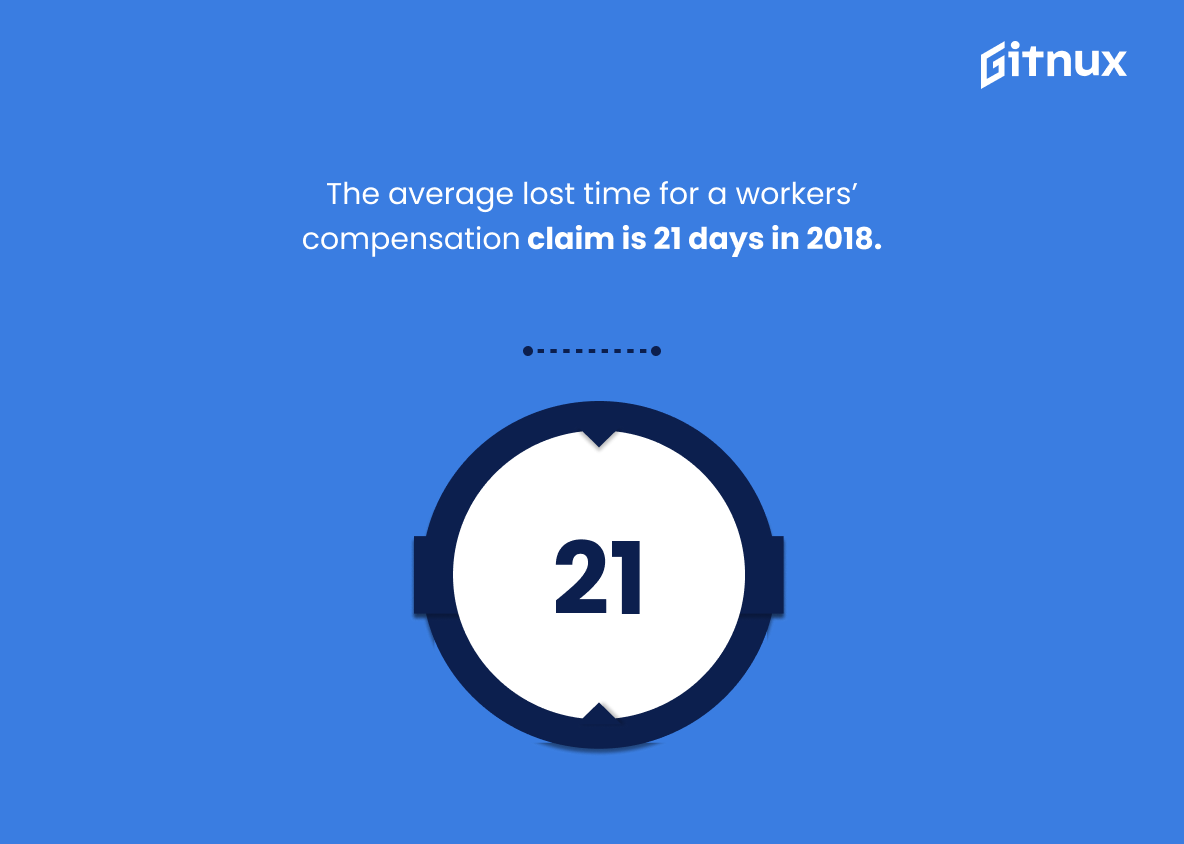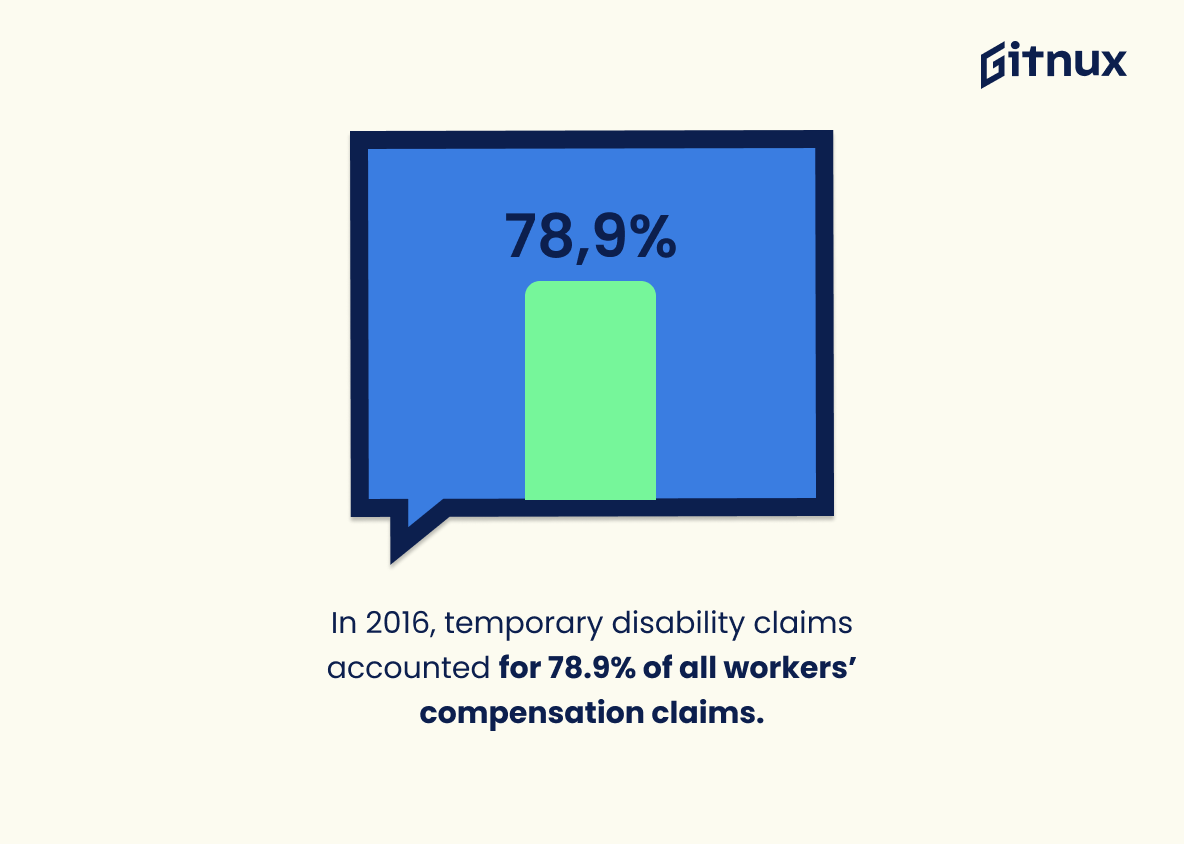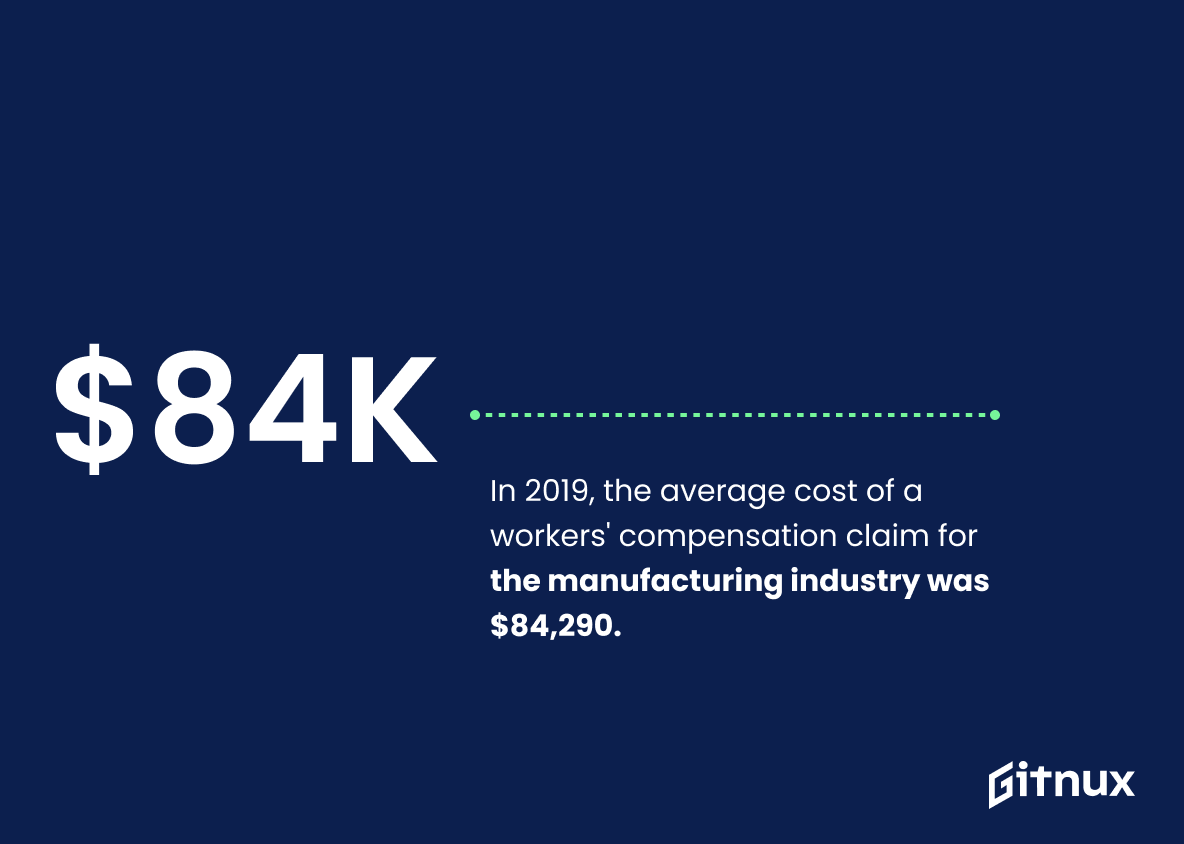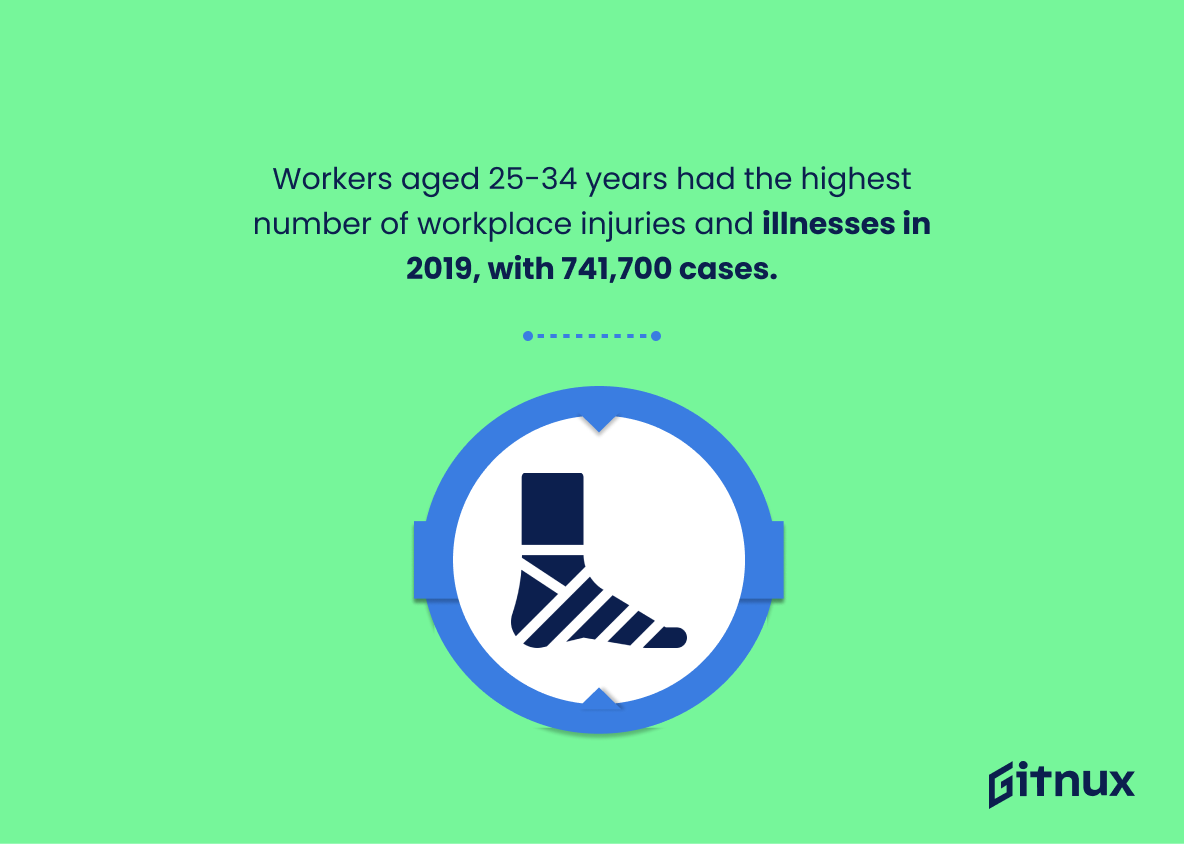Workers’ compensation is an important part of the American workplace. It provides financial protection for workers who are injured or become ill on the job, and helps employers manage their costs associated with these incidents. In this blog post, we will be looking at some key statistics related to national workers’ compensation claims in 2019 and 2018.
We’ll explore how many nonfatal injuries were reported in the US that year, as well as what types of injuries they were most likely to involve; how much money was spent on insurance premiums; which industries had the highest number of cases; and more. By understanding these figures better, we can gain a clearer picture of where improvements need to be made when it comes to worker safety across America’s workplaces.
This statistic is a stark reminder of the importance of workplace safety and the need for employers to take steps to protect their employees. It highlights the prevalence of workplace injuries and illnesses, and the need for employers to take proactive measures to reduce the risk of such incidents occurring. It also serves as a reminder of the importance of workers’ compensation claims, which can provide financial assistance to those who have been injured or become ill due to their work.
In 2019, employers spent an estimated $171 billion on workers’ compensation insurance.
This statistic is a powerful indicator of the importance of workers’ compensation insurance in the modern workplace. It demonstrates the sheer amount of money employers are investing in protecting their employees from workplace injuries and illnesses, and highlights the need for employers to take the necessary steps to ensure their workers are adequately covered. By understanding the amount of money employers are spending on workers’ compensation insurance, we can gain a better understanding of the importance of this type of insurance and the potential risks associated with not having it.
National Workers Compensation Claims Statistics Overview
The total workers’ compensation benefit payments made in 2018 were $62.2 billion.
This statistic is a powerful indicator of the impact of workers’ compensation claims on the national economy. It shows that the amount of money paid out in 2018 was a staggering $62.2 billion, demonstrating the importance of providing adequate compensation for workers who have been injured or become ill due to their job. This figure is a stark reminder of the need for employers to take the necessary steps to ensure the safety of their employees.
In 2018, the workers’ compensation coverage ratio was 88 workers per 100 full-time equivalents.
This statistic is a telling indicator of the state of workers’ compensation coverage in the United States. It reveals that, in 2018, 88 out of every 100 full-time equivalents were covered by workers’ compensation insurance. This is an important statistic to consider when discussing national workers’ compensation claims statistics, as it provides insight into the prevalence of workers’ compensation coverage in the country.
The median workers’ compensation claim for a work-related injury was $40,478 in 2017.
This statistic is a powerful indicator of the financial impact of work-related injuries on individuals and families. It highlights the importance of having a comprehensive workers’ compensation system in place to provide financial support to those who have suffered an injury while on the job. It also serves as a reminder of the need for employers to take steps to ensure the safety of their employees and to provide adequate compensation for any injuries that may occur.
In 2019, the lost-time injury rate in the United States was 0.9 per 100 full-time workers.
This statistic is a testament to the importance of workplace safety in the United States. It shows that employers are taking the necessary steps to ensure their employees are safe and protected while on the job. This is especially important in the context of National Workers Compensation Claims Statistics, as it demonstrates that employers are taking the necessary steps to prevent workplace injuries and illnesses, which can lead to costly claims.
The most common type of workers’ compensation claim is strains and sprains, accounting for 30% of claims between 2017 and 2018.
This statistic is significant in the context of National Workers Compensation Claims Statistics because it highlights the prevalence of strains and sprains as the most common type of claim. This indicates that a large portion of workers are suffering from musculoskeletal injuries, which can have a significant impact on their ability to work and their quality of life. It is important to understand the prevalence of these types of injuries in order to develop strategies to reduce their occurrence and ensure that workers are able to stay safe and healthy in the workplace.
In 2019, transportation and material moving workers had the highest number of injuries and illnesses, with 494,500 nonfatal cases.
This statistic is a stark reminder of the dangers that transportation and material moving workers face on a daily basis. It highlights the need for employers to ensure that their workers are provided with the necessary safety equipment and training to protect them from injury and illness. It also serves as a reminder of the importance of filing workers compensation claims when an injury or illness does occur, as it can help to ensure that workers receive the financial support they need to recover.
In 2018, workers’ compensation medical benefits amounted to $31.5 billion.
This statistic is a powerful indicator of the importance of workers’ compensation claims in the United States. It demonstrates the sheer magnitude of the financial resources that are being devoted to providing medical benefits to those who have been injured on the job. It also serves as a reminder of the importance of ensuring that workers are adequately protected and compensated for any injuries they may suffer while on the job.
In 2017, there were 5,147 fatal work injuries in the United States.
This statistic is a stark reminder of the dangers that workers face every day in the United States. It serves as a reminder that workplace safety should be a priority for employers and that workers should be aware of the risks they face. It also highlights the importance of having a comprehensive workers compensation system in place to protect workers in the event of an injury or death.
Workers with less than one year of experience account for 34% of workers’ compensation claims.
This statistic is a telling indication of the importance of providing adequate training and support to new employees. It suggests that those with less than one year of experience are more likely to suffer an injury or illness in the workplace, likely due to a lack of knowledge or experience in the job. This highlights the need for employers to ensure that new employees are given the necessary training and support to ensure their safety and well-being.
The average lost time for a workers’ compensation claim is 21 days in 2018.
This statistic is a telling indicator of the impact of workers’ compensation claims on businesses and employees alike. It highlights the amount of time that is lost due to these claims, which can have a significant effect on productivity and morale. By understanding the average lost time for a workers’ compensation claim, employers can better plan for and manage the costs associated with such claims. Additionally, it can help inform policy decisions and provide insight into the effectiveness of existing workers’ compensation programs.
72% of workers’ compensation claims between 2017 and 2018 resulted in acute injuries.
This statistic is a powerful indicator of the prevalence of acute injuries in the workplace. It highlights the importance of workplace safety and the need for employers to take steps to protect their employees from harm. It also serves as a reminder that workers’ compensation claims are a reality for many workers, and that employers should be prepared to provide the necessary support and resources to help their employees recover.
In 2016, temporary disability claims accounted for 78.9% of all workers’ compensation claims.
This statistic is a telling indication of the prevalence of temporary disability claims in the workers’ compensation system. It highlights the importance of understanding the dynamics of temporary disability claims and how they affect the overall landscape of workers’ compensation claims. This statistic is a valuable insight into the current state of workers’ compensation claims and can be used to inform policy decisions and strategies for addressing the issue.
In 2019, the average cost of a lost-time workers’ compensation claim for manufacturing industry workers was $84,290.
This statistic is a stark reminder of the financial burden that workplace injuries can have on businesses in the manufacturing industry. It highlights the importance of taking proactive steps to ensure the safety of workers and minimize the risk of costly claims. By understanding the average cost of a lost-time workers’ compensation claim, businesses can better prepare for the potential financial implications of workplace injuries and take the necessary steps to reduce the risk of costly claims.
In 2018, workers’ compensation payouts for wage replacement were $30.7 billion.
This statistic is a powerful indicator of the importance of workers’ compensation in the United States. It shows that workers’ compensation is a vital part of the safety net for workers who are injured or become ill on the job. It also demonstrates the significant financial burden that employers must bear in order to provide this important protection for their employees. This statistic is a reminder of the importance of ensuring that workers’ compensation is available to all workers, regardless of their occupation or industry.
Workers aged 25-34 years had the highest number of workplace injuries and illnesses in 2019, with 741,700 cases.
This statistic is a stark reminder of the importance of workplace safety, particularly for younger workers. It highlights the need for employers to ensure that their employees are adequately protected from potential hazards, as well as the need for workers to be aware of their rights and responsibilities when it comes to workplace safety. The high number of workplace injuries and illnesses among workers aged 25-34 years is a cause for concern and should be addressed with urgency.
In 2018, the construction industry accounted for 20.7% of all fatal occupational injuries.
This statistic is a stark reminder of the dangers of working in the construction industry. It highlights the need for employers to prioritize safety and for workers to be aware of the risks they face on the job. It also serves as a reminder of the importance of workers’ compensation claims, which can provide financial support to those who suffer injuries or fatalities while on the job.
Conclusion
The statistics presented in this blog post demonstrate the prevalence of workplace injuries and illnesses, as well as the costs associated with them. In 2019 alone, there were 2.7 million nonfatal cases reported in the United States and employers spent an estimated $171 billion on workers’ compensation insurance.
The total benefit payments made that year amounted to $62.2 billion while medical benefits totaled at $31.5 billion for wage replacement payouts of $30.7 billion respectively; all demonstrating a significant financial burden placed upon businesses due to these claims each year across various industries and age groups alike – particularly those aged 25-34 years old who had 741,700 cases reported in 2019 alone – making it clear why safety measures are so important when it comes to protecting employees from harm or injury while they work.
References
0. – https://www.irmi.com
1. – https://www.bls.gov
2. – https://www.iii.org
3. – https://www.sedgwick.com
4. – https://www.nasi.org
5. – https://www.travelers.com
